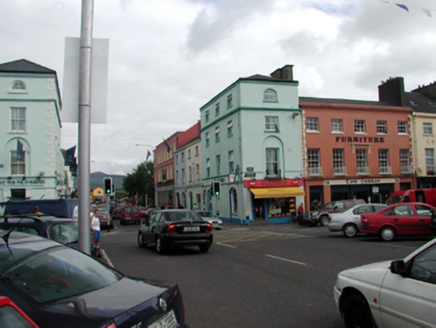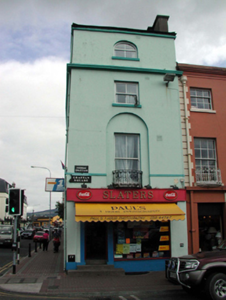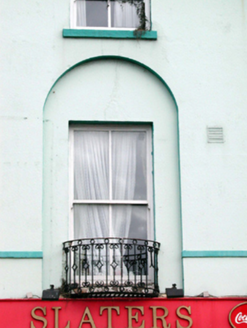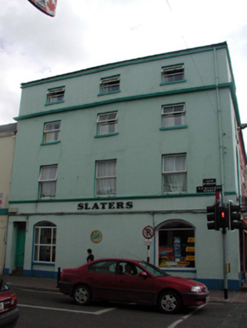Survey Data
Reg No
22821022
Rating
Regional
Categories of Special Interest
Architectural
Original Use
House
In Use As
House
Date
1810 - 1830
Coordinates
226050, 93131
Date Recorded
20/08/2003
Date Updated
--/--/--
Description
Terraced single-bay four-storey house, c.1820, on a corner site retaining some original fenestration with three-bay four-storey side elevation to north-west. Renovated, c.1970, with openings remodelled to ground floor to accommodate commercial use. Mostly refenestrated, c.1995. One of a pair. Hipped slate roof behind parapet with clay ridge tiles, rendered chimney stacks, and cast-iron rainwater goods. Painted rendered walls with moulded rendered courses to first floor and to top floor, and moulded rendered cornice to parapet. Square-headed window openings (in round-headed recess to first floor; round-headed to top floor; segmental-headed to ground floor side (north-west) elevation in segmental-headed recess) with rendered sills. 2/2 timber sash windows to first and to second floor (having wrought iron balconette to first floor) with replacement uPVC casement windows, c.1995, to remainder. Square-headed openings remodelled, c.1970, to ground floor with fixed-pane timber display window, glazed timber panelled door, and timber fascia board over. Square-headed door opening to side (north-west) elevation with three steps, timber panelled door and overlight. Road fronted on a corner site with concrete brick cobbled footpath to front.
Appraisal
An elegant house, built as one of a pair (with 22821023/WD-31-21-23), as part of an integral component of an early nineteenth-century urban planning project initiated by the Duke of Devonshire centred on Grattan (originally Market) Square, framing the exit to Meagher Street to the north-east. However, systematic renovation works in the late twentieth century have compromised much of the original character of the piece, with a crude shopfront is little architectural design distinction inserted to the ground floor, and much of the early fenestration replaced with inappropriate modern articles.







